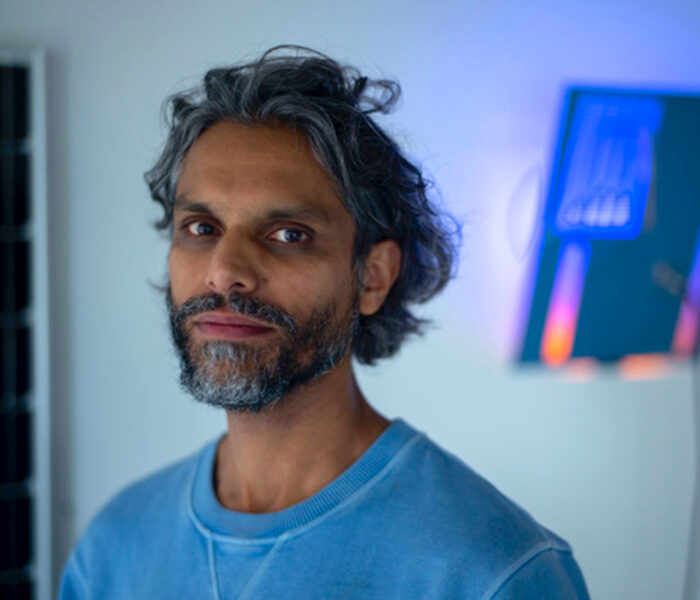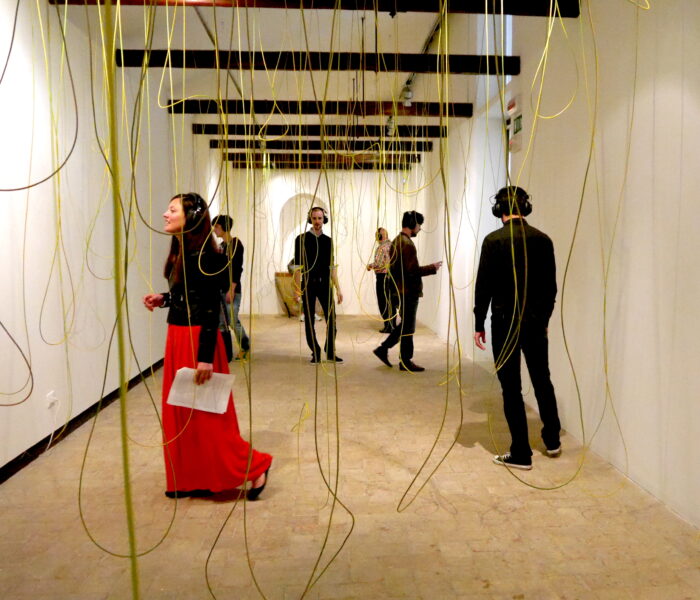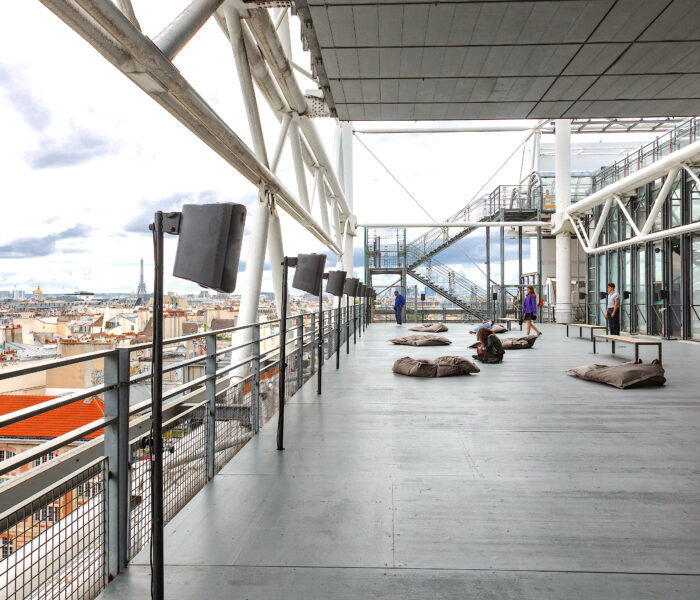The first edition of Biennale Son opened in Valais, Switzerland, on September 16 and will run until October 29 at 17 venues in 5 towns. Over 70 artists and musicians for 6 weeks of exhibitions and more than 20 performances and concerts. Written and conceived by four hands, I spoke with two of the four curators of Biennale Son: Jean-Paul Felley and Sylvie Zavatta. It was an opportunity to get a better idea of the specific nature of this wonderful new event, and the lines and stakes involved.
How did the project for this first International Sound Biennial come about?
Jean-Paul Felley Jean-Paul Felley: As well as being a school principal, I'm first and foremost a curator and exhibition producer. For over 30 years, I've been making artists' projects and dreams come true. With Biennale Son, I wanted to share this interest with the public through a vast event focusing on the growing presence of sound in contemporary art. Sound surrounds us every day. So it was time to consider it as a raw material for artistic creation.
Sylvie Zavatta Sylvie Zavatta: For the Frac Franche-Comté, it all began with an invitation from Jean-Paul Felley. He's very familiar with our collection, which since 2006 has focused on the question of time and its corollaries, notably memory, movement, entropy and duration, and within which the sound dimension is particularly explored - it has to be said that Jean-Paul has contributed to the enrichment of this collection, since he was for a time a member of our acquisitions committee. He therefore proposed to show part of this collection in 6 very different locations in Martigny, allowing us to present works of different kinds and to demonstrate the diversity of artists' approaches to sound. The ensemble presented in Martigny, with the addition of a work by Sébastien Roux at La Centrale, represents only a fraction of the works that could have been presented as part of this Biennale, but it is, in my opinion, representative of this collection in terms of the question we're dealing with here.
Based on your respective backgrounds, what brought you together, what do you have in common and what do you have that's complementary?
JPF: To bring this ambitious project to fruition, we had to gather together co-curators who were crazy enough to embark on the adventure. Each partner in this first edition came on board with their own knowledge and interests. Christophe Fellay brought his perspective as an artist, composer and musician. As for Luc Meier, through the La Becque artist residencies, he rubs shoulders with artists from all over the world. What's more, he has always taken a particular interest in musical creations outside the mainstream. Sylvie Zavatta, for her part, has been concentrating for many years within the FRAC Franche-Comté on collecting works related to music and, more broadly, sound.
SZ: What unites us, beyond the sound dimension, is of course our shared interest in many of the artists presented at this Biennial, but I think that the presence of the Frac collection, with its questioning of the temporal dimension, affirms a specific approach.
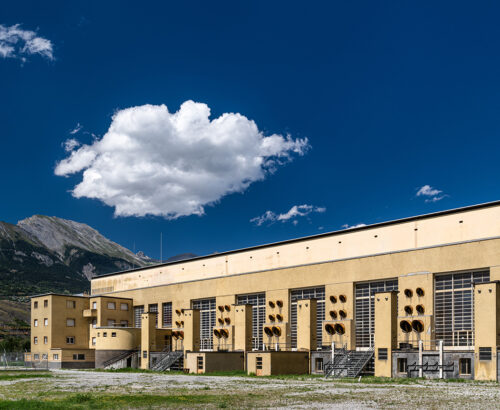
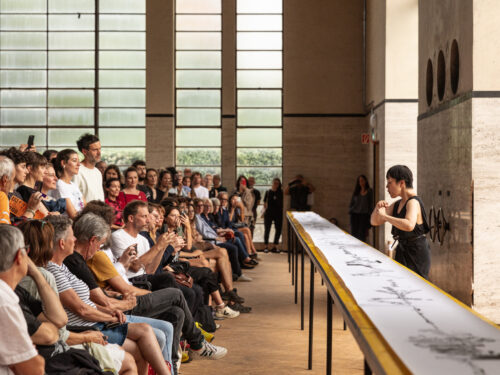
You have defined multi-disciplinarity as an important issue for the Biennial. How have you put this into practice?
JPF: Audiences tend to gravitate towards what they already know. With a project that puts sound at its heart, we felt it was essential not to confine ourselves to exhibitions in the primary sense of the term. We have therefore set up an intense program of events that blends in with the works installed in the vast hall of La Centrale - the nerve center of the Biennale Son. Latifa Echakhch 's "unstructured" stage (Allplatz) is modified and activated until the end of the Biennial. Even the rehearsals take place during opening hours. Visitors are unexpectedly confronted with moments of sound and creation. Personally, I like to be surprised.
SZ: By focusing on the issue of Time, the Frac's collection has gradually and logically opened up to performative, immaterial and other resolutely transdisciplinary works, so numerous are the artists who today draw inspiration from or seize on other artistic territories that share an exploration of the temporal dimension, and so numerous are the creators from these other fields who choose to venture into the field of visual arts.
Exhibitions at the Frac bear witness to this interdisciplinary dialogue. Examples include Montag ou la Bibliothèque à venir for literature, Rose Gold by Cécile Bart, Dancing Machines and Danser sur un Volcan for dance, and Max Feed for sound, dedicated to Max Neuhaus, and very soon, in November, Aux frontières de l'audible by Lawrence Abu Hamdan.
As I said, the interaction between the visual arts and the sound dimension occupies a privileged place within the collection, with works by artists of diverse nationalities, emerging or established, who may be sculptors, photographers, video artists, musicians, composers, poets, and sometimes all at once, not to mention that some may call on artists from other disciplines: dancers, singers...
Within this same collection, the works testify to the porosity of categories and disciplines that is characteristic of our age, which since the Futurists and Fluxus has seen all categories shattered. It is therefore the works themselves that lead us to approach the question of sound through the prism of transdisciplinarity.
In which venues and spaces is this Biennale taking place?
JPF: The Biennale son is present in 5 towns and villages in central Valais. Exhibitions and events are concentrated primarily in a dozen venues in the town of Sion - the capital of Valais - and in the 6 partner venues in the town of Martigny, where we have decided to present only works from the Frac Franche-Comté collection. In Sion, where we benefit among other things from the vast spaces of the former Chandoline hydroelectric plant - La Centrale - we present a number of new works, as well as most of the Frac Franche-Comté events.
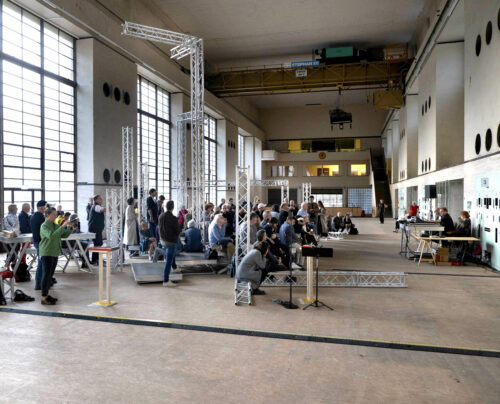
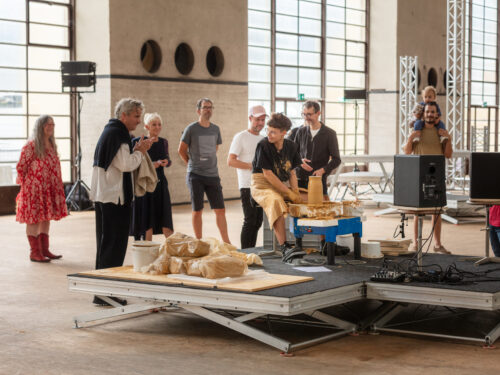
SZ: As far as the exhibitions in Martigny are concerned, the location, its characteristics, its uniqueness and its history were decisive. They have nothing in common with the spaces at the Frac in Besançon, nor with the white cubes we're used to. So I tried to find the right place for each work, and vice versa. A purely sound piece by Hannah Rickards for the chapelle Saint-Michel, another by Micol Assaël for the Grange à Emile cellar. The first is a dilated orchestration of the rumble of thunder. It lends this place an added spirituality, but can also appear somewhat threatening in its dialogue with a 1940s fresco that today appears unspeakably violent (Saint-Michel slitting the throat of a devil represented by a young black man of infinite gentleness).
The second, the recording of a bird in a state of panic at being locked in a room, is amplified by the darkness of the underground space, and here can give us the sensation of an experience as claustrophobic as it is empathic.
In the Manoir, an 18th-century building divided into several rooms that have retained their period decor, the usual question of sound interference between works arose. I opted for an alternation of sound and silent works from room to room, and wanted to highlight certain themes and issues addressed by the artists through their use of sound. To put it simply, even if it means being a little schematic since the works cannot be reduced to the approach proposed here, and without mentioning them all, there are works that evoke the notion of memory and sound traces. I'm thinking of Manon De Boer 's video of a dancer memorizing a piece of music (a work that resonates with Georgina Starr's recording of Yesterday whistled, presented in the Musée du Son in the attic of the Manoir), Dominique Blais ' pinhole camera capturing the entire 5th movement of Joseph Haydn's Symphony No. 45, Christian Marclay 's cyanotype of magnetic tapes, andAngelica Mesiti 's granite disk. (In the same vein, another silent installation by Saâdane Afif can be found at the Fondation Moret, featuring a vase that preserves the words of a singer like a primitive record), ... The Manoir also presents works that leave a great deal to do with the aleatoric dimension so dear to John Cage, notably Céleste Boursier-Mougenot 's installation From here to ear, filmed by Arianne Michel, and Shimabuku's installation. (A dimension also found at the Fondation Moret with Roman Signer and his piano activated by ping-pong balls, themselves agitated by fans). There are also nature-related works, such as Max Neuhaus's drawings and Marcelline Delbeq's fictional piece. Finally, there are video works of an operatic nature, mixing history, narration and fiction, such as those by Ulla von Brandenburg and Nina Laisné, echoed in La grange à Emile by Catherine Sullivan 's film mixing theater, dance, song and music around the AACM, a musical movement advocating artistic and political communitarianism, created in Chicago in 1965.
How did you establish partnerships between artists and venues in the Valais region?
JPF: This first edition is something of a crash test. Most of the time, events of this type are set up in urban centers where there are a number of connoisseurs of contemporary creation. As we had no venue of our own for the Biennial, we met with a number of potential partners in various towns and villages in central Valais. In the end, for this first edition, we decided to stay in the Rhône Valley axis, to facilitate access for visitors coming by train. We have, however, begun to test the public's interest and ability to travel outside the central axis, for example by presenting a film by Agus Nur Amalat the Musée valaisan des Bisses in Ayent.
SZ: With the people in charge of the various venues in Martigny, I found a tremendous availability and a remarkable interest in the works, which bodes well for the future of this Biennial.
Jean Paul, as Director of theEDHEA- École de design et Haute École d'art de Sierre, how does the school relate to the Biennale?
Since the start of the 2021 academic year, we've been offering a Bachelor's degree in Sound linked to the Bachelor's degree in Visual Arts. Most other courses of this type in Switzerland are linked to the music department, which makes for a very different approach. The relationship between EDHEA and Biennale Son was therefore obvious. In Sierre, we also co-organized with the school the2nd symposium " être à l'écoute " on the themes of sound archives and the links between sound and listening.
Interview by Anne-Laure Chamboissier
Photos © Olivier Lovey
Photos © Laura Morier-Genoud
Photos © FINIStud



)

